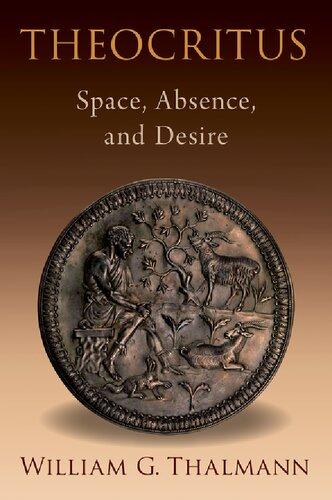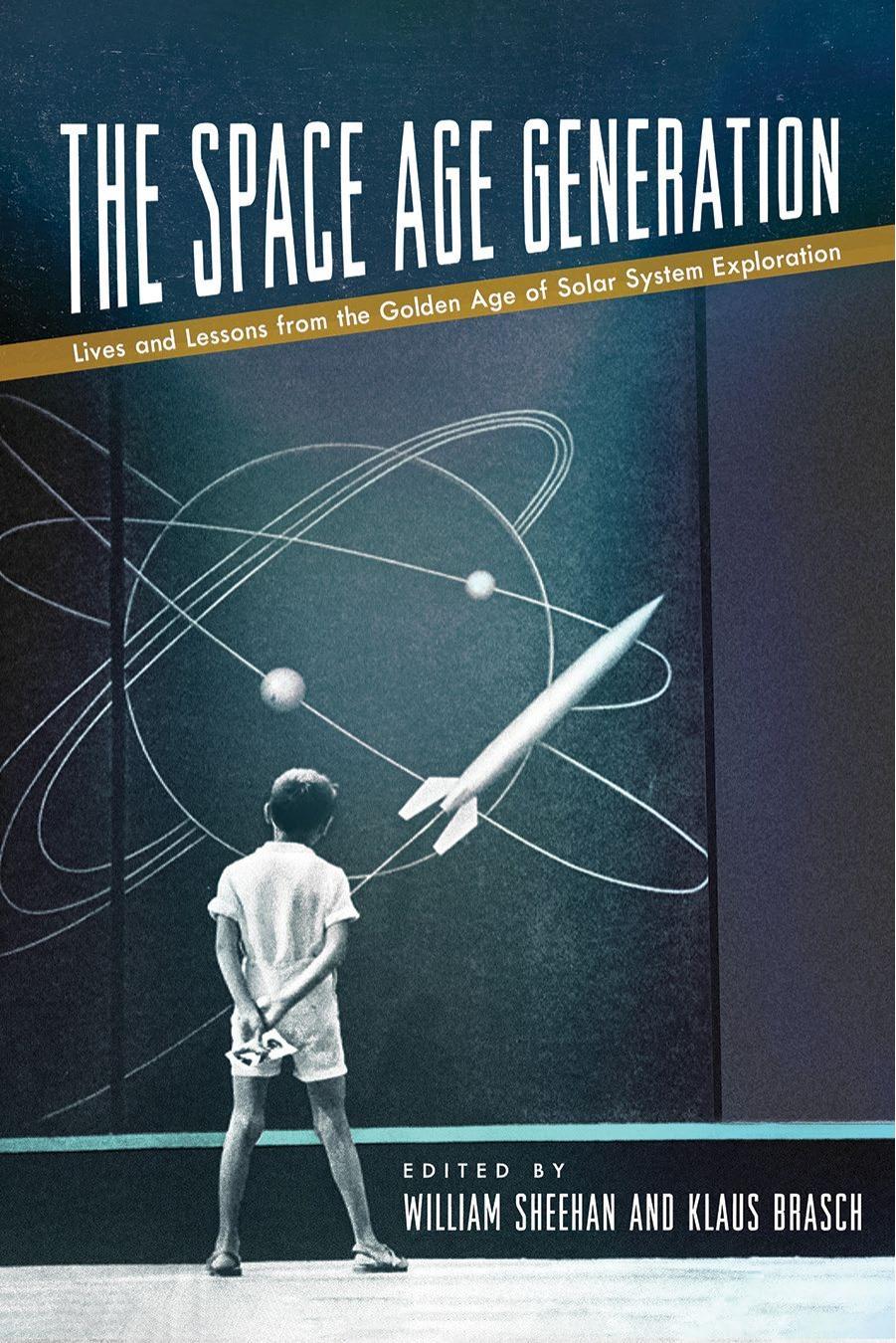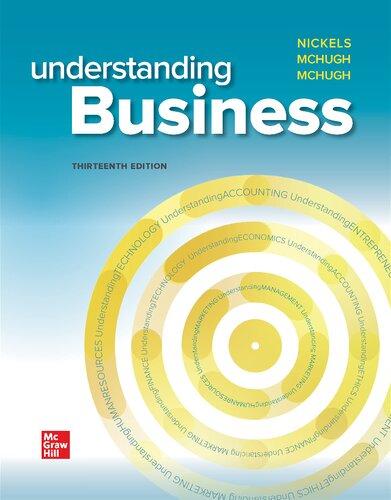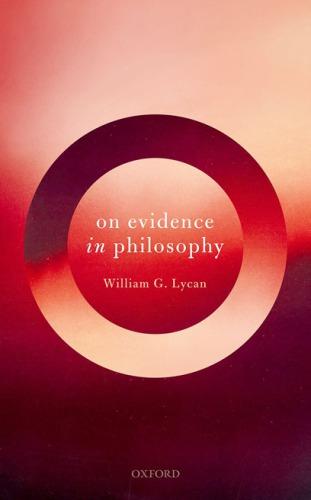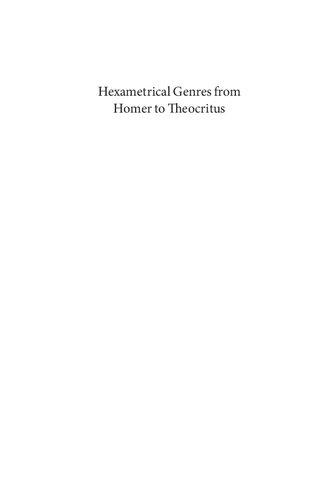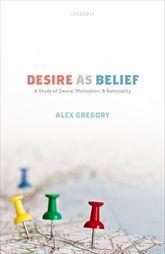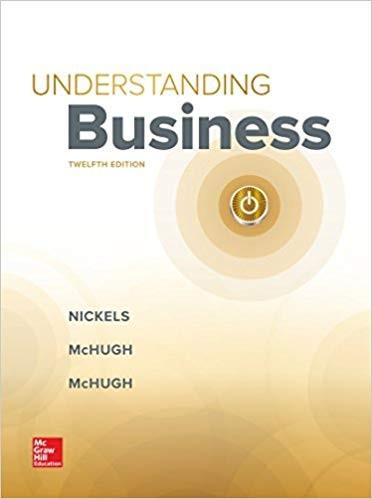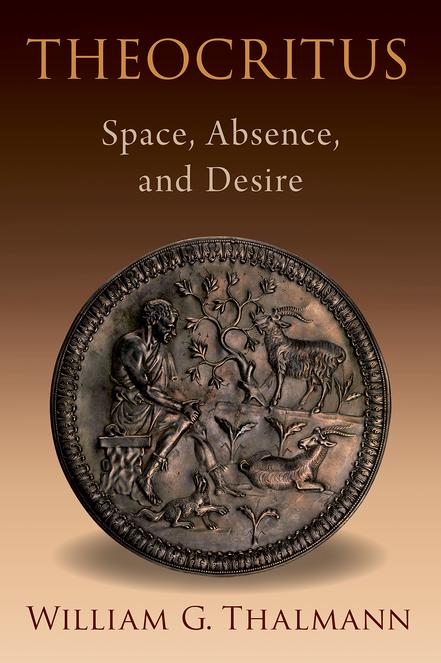Theocritus
Space, Absence, and Desire
WILLIAM G. THALMANN
Oxford University Press is a department of the University of Oxford. It furthers the University’s objective of excellence in research, scholarship, and education by publishing worldwide. Oxford is a registered trade mark of Oxford University Press in the UK and certain other countries.
Published in the United States of America by Oxford University Press 198 Madison Avenue, New York, NY 10016, United States of America.
© Oxford University Press 2023
All rights reserved. No part of this publication may be reproduced, stored in a retrieval system, or transmitted, in any form or by any means, without the prior permission in writing of Oxford University Press, or as expressly permitted by law, by license, or under terms agreed with the appropriate reproduction rights organization. Inquiries concerning reproduction outside the scope of the above should be sent to the Rights Department, Oxford University Press, at the address above.
You must not circulate this work in any other form and you must impose this same condition on any acquirer.
Library of Congress Cataloging-in-Publication Data
Title: Theocritus : space, absence, and desire / William G. Thalmann.
Description: New York, NY : Oxford University Press, [2023] | Includes bibliographical references and index.
Identifiers: LCCN 2022027414 (print) | LCCN 2022027415 (ebook) | ISBN 9780197636558 (hardback) | ISBN 9780197636572 | ISBN 9780197636589 | ISBN 9780197636565
Subjects: LCSH: Theocritus—Criticism and interpretation. | Space in literature. | LCGFT: Literary criticism.
Classification: LCC PA4444 .T38 2022 (print) | LCC PA4444 (ebook) | DDC 884/.01—dc23/eng/20220711
LC record available at https://lccn.loc.gov/2022027414
LC ebook record available at https://lccn.loc.gov/2022027415
DOI: 10.1093/oso/9780197636558.001.0001 1 3 5 7 9 8 6 4 2
Printed by Integrated Books International, United States of America
Preface vii
Introduction
Note on Text and Transliteration xxi
1. Theocritean Spaces 1: The Bucolic and Urban Poems 1
Fictional Space 1
Bucolic Space 4
General Description of Bucolic Space 4
Spatial Relations in Idyll 5 16
Spatial Relations in Idyll 1.1–23 25
Spatial Relations in Idyll 7 27
The “Urban Mimes” 32
Idyll 15 32
Idyll 2 40
2. Theocritean Spaces 2: Mythological and Encomiastic Space 44
Mythological Space 44
Idyll 13 45
Idyll 22 53
Idyll 24 63
Encomiastic Space 73
Idyll 16 73
Idyll 17 85
Idyll 14 89
3. The Poetics of Absence 93
Absence, Desire, and Song 93
Idyll 1: A Version of Bucolic Origins 101
Idyll 7: Lykidas’s Song 121
Idyll 6: Breaking the Frame 129
Idyll 2: Desire in Town 140
Idyll 13: Herakles in Love 147
4. On the Margins of Bucolic 154 Poems Concerning Margins 154
Idyll 4: The Waning of Bucolic 155
Idyll 10: The World of Labor 169
Idyll 21: The Dream of a Fisherman 181
5. Conclusion
Preface
I first read Theocritus’s bucolic poems as a college sophomore, in a course taught by Gilbert Lawall, whose book about them was then in press and who let the class read it in proof. I would like to thank Professor Lawall for introducing me to this wonderful poet and for offering me some ways of approaching him. Unfortunately, despite his best efforts, I failed to appreciate the riches of this poetry. It seemed to me too labored, too bookish, trivial by comparison with the great questions raised by Homer and Greek tragedy, which enthralled me then and still do. This response, or lack of it, had nothing to do with Professor Lawall’s teaching but was due to the callowness of my nineteen-year-old self. Still, I left Theocritus with a vague intuition that there was something interesting in those poems, if I only knew how to come to grips with them. In graduate school I read through all of Theocritus because he was on the reading list, this time with more engagement but with a certain amount of bewilderment at what seemed to me a very miscellaneous collection. Over the years I taught a few of the Idylls now and then to graduate students, usually in Greek literature survey courses, and often with the thought that I should come back to Theocritus someday; but I was busy with other projects. While I was working on my book on Apollonius’s Argonautika, I gave a graduate seminar several times in Alexandrian poetry that began with Theocritus. I worried at first that the students would be left cold by him, more or less as I was as a student, but was delighted when, each time, the opposite proved to be the case. Their enthusiastic engagement with the texts, their animated discussions of tantalizingly puzzling lines (what does “all invented for the purpose of truth,” Id. 7.44, mean?), and their intellectual energy inspired me. I thank all of those students for our discussions.
I would like to thank in particular two alumni of that seminar. As I was forming and clarifying my ideas about Theocritus, I had the benefit of many hours of discussion with Matthew Chaldekas while he was working on his dissertation on vision in the Idylls. After this lapse of time I do not recall specifics of the conversations, and I am not aware of particular debts, though there may be some. In any
case, these discussions were very valuable to me. Later, he read and commented generously on a first draft of what is now chapter 3. More recently, John Kelleher took time from his dissertation on Plato and fourth-century intellectual history to read a penultimate draft of the whole book. His comments on its overall arguments came at a critical time and helped me keep them in focus.
Because of administrative and other responsibilities, work on this book had to proceed in fits and starts and took a long time. I would like to thank the University of Southern California and the USC Dornsife College of Letters, Arts and Sciences for leaves in the spring semesters of 2017 and 2020 that enabled me to concentrate on research and writing.
The second leave coincided with the beginning of the Covid-19 pandemic, which led to fifteen months of isolation at home. This involuntary leisure gave me time to concentrate on further reading of books and articles and to write and rewrite most of the book. This work gave me a focus during an otherwise miserable time. It would be facile and wrong to call what I was doing escapism into Theocritus’s green world, but immersing myself in the Idylls’ complexity and the challenge of writing about it did much to offset the constant feeling of oppression caused by awareness of so much suffering and death and by appalling political events.
Because of these circumstances, I had no direct access to a library. So I am especially grateful to the staff of the USC libraries, who, working behind the scenes and anonymous to me, provided electronic copies of innumerable articles and book chapters that I badly needed. It is no exaggeration to say that without their help, I would have made no progress on the book during this difficult period and could not have completed it.
Chapters 1 and 2 are a revised and greatly expanded version of my chapter, “Theocritus and the Poetics of Space,” in Brill’s Companion to Theocritus, edited by Poulheria Kyriakou, Evina Sistakou, and Antonios Rengakos. I thank the editors for inviting me to contribute to this fine collection while I was developing my ideas on Theocritean space.
Once again, the staff of Oxford University Press has been a pleasure to work with and has made the process of submission, review, and production smooth. I thank in particular Stefan Vranka for his support of the book and Project Editor Sean Decker for his constant helpfulness. Jubilee James at Newgen Knowledge Works kept everything on schedule and inspired me with her efficiency. I am extremely grateful to Wendy Keebler for her meticulous and wise copyediting. Warm thanks as well to the anonymous readers for the press.
Over the years, my colleagues in the USC classics department have created an atmosphere of warmth, generosity, and intellectual energy in which it has been
Preface
a pleasure, and an education, to work and teach. They have played no small part, though an intangible one, in the writing of this book.
Finally, I thank my family—my sisters, my wife, our son and daughter, their spouses, and our grandchildren—for being an inexhaustible source of joy even during the dark times when we could communicate only by phone and FaceTime.
Introduction
In addition to a number of epigrams, thirty complete or mostly complete poems have come down to us under the name of Theocritus, a poet evidently active in the 280s and 270s BCE. He probably spent at least part of that time in Alexandria, where he seems to have enjoyed the patronage of Ptolemy Philadelphus. Not all of the collection is certainly by Theocritus; some poems are fairly clearly of later date, although they are in his manner, and the authorship of others is uncertain. This book is concerned with many of the Theocritean poems and a few whose authorship has been questioned. The poems in the collection are conventionally, and more or less appropriately, called Idylls (from εἰδύλλια, “little pictures, vignettes,” or else “short poems of different types”).1 As the diminutive term suggests, they are brief poems; the longest (Id. 22) is not much more than two hundred lines, and most are considerably shorter. Although Theocritus is best known for his bucolic Idylls, the collection is surprisingly—and for many first-time readers, bewilderingly—diverse. One might expect that such a slender group of short texts hardly provides material for a book. In fact, Theocritus is an extraordinarily rich, suggestive, and rewarding poet. Each poem, every line almost, can take the reader’s thoughts in many directions at once. There is no way to read these poems casually. To read them and reread them and to write about them has been challenging and a joy. Their very complexity is what has kept me fascinated.
Because of the nature of the poetry and the variety of the collection, much of the scholarship has tended to consist of articles focusing on single Idylls, although there have been excellent books as well. These careful, deep readings have been extremely valuable, but they have tended to atomize the collection, to obscure what many of the poems have in common, such as themes that crop up in very different poems. Following a recent trend in scholarship, I have attempted here to consider each Idyll in its individual nature—and every one of these poems is
1. The latter translation is from Gutzwiller 1996, 132.
Theocritus. William G. Thalmann, Oxford University Press. © Oxford University Press 2023. DOI: 10.1093/oso/9780197636558.001.0001
distinctive—and in relation to the corpus as a whole, or as much of it as I could appropriately discuss in a single book. And so I have picked out certain topics that especially interest me and that cut across individual differences among poems. I want to make it clear at the outset that these choices make no pretense at somehow exhausting the possibilities of this poetry, as if such a thing were ever possible. There are many different ways of approaching Theocritus and thinking about his poems, and I often indicate in footnotes alternatives to the views I express. I have simply selected a few perspectives on the poems that I think might be useful. My hope is to contribute somewhat to a continuing conversation about Theocritus and Alexandrian poetry, one that should accommodate a variety of voices.
This book continues and extends my interest in space in literature that I explored in an earlier work on Apollonius of Rhodes (Thalmann 2011). Space and spatial readings are the core of my discussions here as well, but I have taken a rather different approach, one better suited to the nature of Theocritean poetry. These poems are less obviously spatial texts than the Argonautika is, with its linear journey and its concern with places and their associated narratives, but I hope to show in the end how fruitful spatial readings of Theocritus also can be. The special challenge here is that, with some important exceptions such as those explicitly set on Kos or in Alexandria, space in these poems is largely fictional; despite obvious mimetic aspects, these spaces are in important ways products of the imagination. For reasons I give at the beginning of chapter 1, the fictionality of space is not really a problem or any bar to a spatial approach.
The first two chapters treat space directly as it is constructed by the poems. The Idylls I discuss can be grouped into four categories: bucolic, urban, mythological (the so-called epyllia or “small-scale epics”), and encomiastic. These are more than rough-and-ready groupings for the convenience of discussion; the poems within them seem to cohere in significant ways, and those within each group configure space in their own way. In the end, however, these groups taken together, even including the mythological poems, as I shall argue, create an overarching space in which the bucolic and urban worlds are placed within the Ptolemaic empire as their wider context. This is obviously true in regard to Idyll 15, which is set in Alexandria, but the town in which the conversation between Thyonikhos and Aiskhinas is set in Idyll 14 is, by the end of the poem, placed in relation to Alexandria as margin to periphery. The bucolic poems generally focus on their own space, which readers experience as almost autonomous, but they, too, as we shall see, are located within imperial space. Idylls 4 and 5 are exceptional in that they are explicitly located near cities in South Italy in a region that was, by Theocritus’s era, suffering hard times. This area contrasts implicitly with
the Ptolemaic empire, within which, we may infer, the bucolic world can flourish in its abundance.
Space is partly constituted by the objects and people within it, but in Theocritus it also is defined by what is not there, by absence. Chapter 3 examines the constitutive role of absence in the bucolic poems especially but also in some others, and in particular the way it motivates, and indeed generates, both internal songs and the Idylls themselves through arousing desire that, crucially, can never be satisfied because its objects cannot be attained. Bucolic space especially is thus constructed as a space of desire and therefore depends upon absence. The bucolic Idylls bring the reader closer to the bucolic world, but because that world is fictional—as the poems often remind us—they keep it forever out of reach. The readers’ desire for it mirrors the desire of the characters within the poem; it is what keeps them reading.
In keeping with its fictional nature, Theocritus constitutes bucolic space not through detailed descriptions but with a selective and stylized repertoire of elements: mountains, hills, and caves; trees and bushes; animals, especially sheep and cattle; and herders. He refers to this space consistently as “the mountain” (τὸ ὄρος), even though it seems actually to be in foothills, so that it cannot be placed within a literal topography. He also defines it through what is on its margins, and that is the subject of chapter 4. There I discuss Idyll 4, which I argue is marginal although it is set in the bucolic world, because it depicts that world, and the conventions of its poetry that Theocritus constructs in other Idylls, in the process of disintegration. I then turn to Idyll 10, which concerns reapers and is not bucolic and which, I argue, confronts bucolic leisure and erotic desire with the realities of agricultural labor. I end with the questionably Theocritean Idyll 21, which similarly depicts the labor and grinding poverty of fishermen, who appear on the edges of attention in the bucolic poems.
Chapter 5, the concluding chapter, attempts to take stock of the discussions in the earlier chapters and then come to grips with the question of what the stakes are for the reader, particularly in the bucolic Idylls. I discuss this problem from the perspective of the dynamics of absence and desire described above.
Theocritus is especially memorable for his bucolic poetry, partly because of its qualities and partly because, thanks to Vergil, it is the precursor of the European pastoral tradition. The temptation is to concentrate on those poems. The foregoing summary might suggest that I have succumbed to that temptation, and it is true that I have written especially with an eye on them. But in fact, the book contains sometimes lengthy discussions of non-bucolic poems as well. I do give prominence to the bucolic poems, but Theocritus himself is partly responsible for that. As I argue at several points, bucolic thinking pervades even some of the other Idylls, as can be seen, for example, in the vision of
a restored Sicily in Idyll 16, in the description of the surroundings that Amykos enjoys in Idyll 22, and even in the tableau of Aphrodite and Adonis in the royal palace at Alexandria in Idyll 15. Bucolic is thus central to my discussion because it is important in the Theocritean corpus,2 but I should emphasize that I discuss many other aspects of the non-bucolic Idylls as well and consider them just as interesting and important.
Even though each poem has distinctive individual qualities, and even though one can justifiably divide many (though not all) of the Idylls into groups, there is an overall coherence in the Theocritean corpus—not a rigid unity but a coherence that arises in the first instance from the remarkable number of connections that readers can draw between very different poems. But it amounts to more than that. Many poems seem in one way or another to respond to the new mobility of the Greek world in the wake of Alexander’s conquests and to both the excitement and the anxieties it seems to have produced.3 Along with that, they respond indirectly, I think, to the experience of living outside the Greek world as traditionally defined and in closer contact with non- Greeks, especially in multicultural Alexandria, an experience that could raise questions about definitions of the self and the fluidity of boundaries. We can see such anxieties reflected indirectly, for instance, in Idyll 17’s attempt to depict the Ptolemaic empire as producing spatial clarity, a comprehensive order for a large part of the world under Greek rule, where every component has a defined place.4 Or we might think of Aiskhinas dislodged from home in Idyll 14 through his own fault in an unhappy love affair. As a mercenary, he will be deracinated perhaps, but his movement will have a goal and a purpose: Alexandria and service to Ptolemy. Idyll 15 is another obvious example, with the women’s encounters in the streets of Alexandria with Greeks from other parts of the homeland and Praxinoa’s notorious disparagement of Egyptians.
Theocritus’s creation of the bucolic world can be considered a similar, though perhaps more submerged, response to the same conditions. It might have offered, in imagination, a vantage point from which to think about movement and 2. To say this is not to claim that Theocritus’s poetry as a whole, or whatever collection of it was made in antiquity, was “governed by the bucolic concept” (Gutzwiller 1996, 119, arguing against this notion), only that the bucolic concept exerts an influence in poems outside the bucolic Idylls. Stephens (2006, 92) also shows “how deeply the values associated with pastoral are embedded in all of Theocritus’ poetry”—a view subtly different from the one Gutzwiller rejects.
3. On this deracination and literary responses to it, see especially Selden 1998.
4. Stephens’s argument (2003, 147–170) that the praise of Ptolemy is couched in both Greek and Egyptian cultural idioms adds a further important dimension.
placelessness—Michel Foucault’s “heterotopia.”5 Such a world, with its intense localism, offered a vision of stability, timelessness, and rest, where everything and everyone seemed to have a proper place and to fit. The attractions of such a refuge must have been strong, but readers who expected only that might have been surprised. One of the questions that the bucolic Idylls implicitly raise (for example, spatially at the beginning of the programmatic Idyll 1, as I will show) is the relation of human culture to nature and whether human beings can ever truly fit into nature. One prominent manifestation of this question is the contrast between the elaborate and usually frustrated human quests for love and the easily satisfied lust of goats. And bucolic leisure only allows time for restless desire, which issues in song. In addition, Idyll 7, as I will argue, is from one perspective about being out of place. Lykidas is a bucolic figure who shows up in the lowlands, displaced from “the mountain,” and Simikhidas and his friends are on a day’s jaunt from the town that is their home. They meet in an apparently featureless place, and the question of their identities is very much in play, as modern scholarly discussion shows. Is Lykidas goatherd or god? Is Simikhidas a mask for Theocritus? What kind of poet will he be? Will he be worthy of “the mountain”? At the end of the poem, Lykidas abruptly departs, and Simikhidas ends up on a farm, in a beautiful (but not bucolic) place where all his senses are gratified, enjoying a festival to Demeter that commemorates the completion of farm labor. But he has done no work. Does he belong here? And so I suggest that the bucolic Idylls, along with the others, raised questions posed by the new conditions of their readers’ world and offered them a distanced perspective on issues that they were confronting in their actual lives.
To speak of groupings of the Idylls and of an “overarching coherence” among them does not imply that I think that we have the remains of an ancient poetry book in any way like some we know of from the early third century BCE, such as the Milan Posidippus, with texts grouped by subject and placed in a way that invites reading a given poem both in itself and in relation to adjacent poems. We do not know whether Theocritus himself collected his poetry and published it together or if someone else did so after his death, or what form such a collection might have taken in either case. The earliest collection we know of was compiled by Artemidorus in the first half of the first century BCE, and subsequent ancient editions arranged the poems in different orders, although all put the bucolic poems first and began with Idyll 1.6 The corpus we have seems to derive from those editions, with accretions of post-Theocritean poems that already had begun
5. Foucault 1986.
6. These statements are all based on Gutzwiller 1996.
to be added in antiquity, notably Idylls 8 and 9. The unity I speak of, then, is the result of recurrent themes, concerns, and outlook in what we have of Theocritus’s poetic production.7
It is reasonably safe to think that Theocritus was born in Sicily; that was the prevailing belief in antiquity, although we have no idea what it was based on. Beyond that, we know virtually nothing of his life. In particular, there is no evidence independent of the poems themselves as to where Theocritus wrote his poetry.8 What has been considered internal evidence is not strong. Idyll 16, addressed in part to Hieron II of Syracuse and containing a wish for Sicily’s restored prosperity, has often been read as a plea for Hieron’s patronage, and that has led to the assumption that Theocritus must have been living in Sicily when he wrote it. That is far from a necessary conclusion, and it rests on a reading of the poem that I would question. I try to show in chapter 2 how many interesting aspects of Idyll 16 can emerge if we do not make patronage in itself the center of our reading. Idylls 1 and 11 are clearly set in Sicily, but that does not mean that Theocritus wrote them there. Idyll 7 has been thought to show him living and working on the island of Kos, but that is based on the notion that the poem’s narrator, Simikhidas, straightforwardly is Theocritus. Theocritus’s poetry could have been written anywhere. Nevertheless, like many others, I think it likely that he worked at least for some time in Alexandria, under the patronage of Ptolemy Philadelphus and with the resources of the Library, and that he came there into creatively productive contact with Callimachus and Apollonius of Rhodes, who we know were there. There is no evidence for this. Having cast doubt on biographical readings of other Idylls, I would not point to the tributes to Ptolemy and his patronage in Idylls 14 and 17, although the importance of Alexandria in the spatial configuration of the poetry, as discussed in chapter 2, is suggestive. Theocritus’s connection with Alexandria is just a heuristic belief advanced for the sake of discussion, and nothing in this book depends on it. I do (usually tentatively) refer to readers in Alexandria in describing the possible effects of the poems, and I have this much justification at least: that even if Theocritus’s poetry was not written in Alexandria, it was certainly read there. The skeptical reader can understand “Alexandria” in such contexts as shorthand for “any city in the Hellenistic Greek world,” since it is clear from their nature that the poems
7. Cf. Stephens 2006, 92, who argues for “treat[ing] the idylls as a whole—not as a poetry book, but as a group of texts with internal dynamics and intertextual play that transcend generic boundaries.” Stephens 2018, 57–83, shows what a reading of the corpus from this perspective looks like. On the limits imposed on our understanding by the tendency to separate the bucolic poems from the rest of the Idylls, see also Krevans 2006.
8. On this question, see the concise discussion in Hunter 1999, 1–2.
appealed especially, although probably not only, to a sophisticated and very wellread audience that significantly included urban elites.
Idylls 13 and 22 bear a strongly marked relation to Apollonius’s Argonautika, but which poet influenced the other is a much-discussed question that has never been resolved. I find Richard Hunter’s various arguments that Theocritus used and responded to Apollonius quite compelling, particularly his point that these two interconnected Idylls treat episodes (of Amykos and Hylas) that straddle the division between Argonautika 1 and 2.9 It is also tempting to take, as some scholars have done, the eagle simile at Id. 13.25 as a reference to the eagle that the Argonauts see returning from its feast on Prometheus’s liver when they get to the mouth of the Phasis River at the end of Argonautika 2. In general, the more I have worked with Idylls 13 and 22, the more they have seemed to me responses to Apollonius, and in particular I would like to think of Theocritus’s treatment of space in Idyll 13 as self-consciously in contrast to that of Apollonius. However, Murray’s recent arguments,10 on the basis of astronomical references in the poem, for dating the Argonautika to 238 BCE, would put the finished version of the poem later than Theocritus and pose a significant difficulty for this view. Significant but not insurmountable. Since Apollonius must have worked on his epic over many years, it is possible, as others have suggested,11 that the poets were in communication with each other as their works evolved and that they responded simultaneously to each other—a process that would have been facilitated by, although it would not have required, Theocritus’s presence in Alexandria. However that may be, in my discussions of Idylls 13 and 22 in chapter 2, I leave questions of priority aside. My references to Apollonius there are meant only to point to alternative ways of shaping narratives about the same myths that set in relief the choices that Theocritus made.
I have not tried to cover all the Idylls, not even all that are certainly by Theocritus, but I have discussed most of the latter. A few just would not fit well into the topics that were my focus. Furthermore, I have made no attempt to offer a “complete reading” (whatever that would be) of any one poem. Instead, I concentrate on aspects of each that seem relevant. In some cases, this has meant that I discuss different parts of the same poem in separate chapters, and this approach in turn has necessitated a certain amount of repetition. I apologize to the reader for any awkwardness this method entails, and I hope it will be offset by clear movement of the argument.
9. Hunter 1996, 59–63; 1999, 264–265.
10. Murray 2014.
11. E.g., Foster 2016, 128–129: “Theocritus has read some version of Apollonius’ Argonautica.”
My use of the term “bucolic” rather than “pastoral” is in line with current scholarly usage that seeks to distinguish Theocritus’s poems from the later pastoral tradition, of which they were the forerunner, and should occasion no controversy.12 What is more unusual and may invite criticism is my restriction of the term “bucolic” to poems about livestock herders (that is, among genuine Theocritus, Idylls 1, 3–7, and 11, although, as I have said, there are distinctively bucolic passages in other poems).13 The consequence of this narrowing of the term by comparison with other writers’ usage is that I do not consider every rural scene in Theocritus bucolic, and in particular I distinguish carefully between the bucolic and the agricultural. I think it is a mistake to call the scene at the end of Idyll 7 bucolic or to consider Idyll 10 bucolic even though it concerns reapers. I make this distinction because I think Theocritus consistently does so, and I think that it can lead to fruitful results. At the same time, the reader should be aware that my use of “bucolic” may not be entirely consistent with ancient usage. Kathryn Gutzwiller has argued, to my mind quite persuasively, that what made poems “bucolic” were thematic concerns related to one or another of the meanings that “to bucolicize” (βουκολεῖν) had acquired in Greek by Theocritus’s time.14 The reader should feel free to understand “bucolic” in this book as a term of convenience to designate a distinctive and highly influential subset of Theocritus’s Idylls.
I have tried, in any case, to avoid getting bogged down in questions of genre, although some of these are unavoidable. Whether bucolic may be said to be a genre and what its relation to later pastoral may be are matters that have been well handled by others and that I have not touched. There is another aspect of genre that I do discuss, with some mild skepticism. One tendency among scholars is to suggest that in one or another Idyll, Theocritus is using but also implicitly criticizing earlier genres, such as epic poetry. I think that this can be important, and certainly one of the pleasures of his poetry is his manipulation of the conventions and values of several genres at once into new and surprising combinations.
12. For strong arguments from two different perspectives, see Halperin 1983 and Gutzwiller 1991, 3–13.
13. Some would omit Idyll 11 from this category, but Polyphemos is a herdsman, and his values are those of the bucolic world (see especially Id. 11.34–49). Spatially and in other respects, Idyll 7 differs significantly from the other bucolics, and what is described at the end is an agricultural, as distinct from bucolic, pleasance. But Lykidas, at least, is a bucolic figure even if Simikhidas is not, despite his claim at Id. 7.91–93; and Tityros’s song, embedded within the song of Lykidas, takes us into the bucolic world.
14. By this criterion, however, Idylls 10 and 21 would be bucolic (Gutzwiller 2006, 398), whereas I think there are advantages to the distinctions I make. Perhaps the difference is between semantic and spatial approaches, and each in its own way can be productive.
But I doubt that generic play or critique was ever his sole aim. As I say at several points, I think of genre as being like a language through which he was expressing other concerns. If that involved critique of epic or tragic values, so much the more interesting; but I do not think that our reading of any poem should end there.
I can bring together these remarks about genre and my groupings of Theocritus’s poems by responding briefly to David Halperin’s Before Pastoral (1983). Halperin makes a powerful case for understanding the Idylls as a kind of epos that renews for contemporary Hellenistic tastes traditional Greek epos; presumably the term epos is meant to include Hesiod, the Homeric Hymns, and other hexameter poetry as well as heroic epic. There are considerable advantages to this view. It places Theocritus in the context of the Greek literary and cultural tradition, and it helps us avoid the temptation to read him anachronistically with expectations formed by later pastoral poetry. It also helps us appreciate how original his poetry is. And it provides a basis for stressing what the various poems have in common. On the other hand, it tends to play down, or might unintentionally lead the reader to play down, the very important presence in the Idylls of other strands of the tradition, particularly lyric poetry and drama. In a formal sense, Halperin may be right to identify the bucolics and other Idylls as epos after all, they were written in dactylic hexameters—but that is one view of them that should be supplemented with attention to the way they incorporate other poetic types as well, which all had their own history that becomes part of the new poems’ fabric. The point is not the formalist “crossing of genres” but the combination of older poetic types in new and striking ways that does for them what Halperin says Theocritus does for epos: reinvigorate them for a new age.
In the second place, bringing all the hexameter poems by Theocritus in the corpus together, although it has the advantage of calling attention to their common formal and thematic elements, works against the kind of division of them into groups (bucolic, urban, mythological, and encomiastic) that I have made. I do think these categories have a real basis in the poetry; they are something more than an arbitrary way of organizing the poems for discussion and far less than formal subgenres of what could be called Theocritean epos. I would not agree with Halperin, for example, that grouping the bucolic poems together is necessarily the result of the fallacy of viewing them through expectations formed by later pastoral. I have been guided principally by the way they work together thematically and play off one another, and especially by the way they cumulatively construct a bucolic space, the margins of which Theocritus explores in certain other Idylls. I would make much the same claim in regard to the mythological, urban, and encomiastic poems. I hope that the first two chapters will show the bases for these statements. Ultimately, nothing of what I say here seems incompatible with Halperin’s arguments.
Theocritean Spaces 1
The Bucolic and Urban Poems
Fictional Space
The poems of Theocritus, like those of Apollonius of Rhodes and Callimachus, are markedly spatial in their emphasis, for reasons that might have to do with the expansion of the Greek world in the wake of Alexander’s conquests and in particular with the Ptolemaic empire. But Apollonius’s Argonautika led the Argo through a space consisting of places that his readers could, or thought they could, identify as real, and the stories in Callimachus’s Aetia, not to mention those in his hymns, are firmly tied to actual cities, regions, and islands. Some of Theocritus’s Idylls are similarly associated with real places; but it may seem perverse, or at least futile, to consider space in the bucolic poems, a subgroup of his poetry that constructs a fictional world and self-consciously puts its fictionality on display. What can space mean in such a context?
The question is a natural one to ask, but as I hope this chapter will show, the problem is trivial or nonexistent. The spaces depicted in all three poets, including bucolic space, bear some relation to actual spaces within which people lived and went about their activities: cities and, within them, houses and palaces; hillsides, sometimes with names of actual landmarks and towns; and the Ptolemaic empire. The real challenge is how to talk about space in literature, in contrast to the real, material spaces and places that are described and studied by anthropologists and geographers. In order to do that, we have to give up any assumption we might be tempted to make that literary spaces are necessarily mimetic—a faithful and neutral portrayal of regions and places as they actually are. Instead, depictions of space are part of the world-building that literary texts perform.1 They are, then,
1. On world-building as opposed to mimesis, see Doležel 1988.
representations of space—space conceived and presented in particular ways that fit the modes of seeing things adopted by the text. They may bear some relation to actual spaces and places that often have the same names, but they are not identical to them. Literary depictions of space are never exhaustive and always purposeful. “Representations of space” is, in fact, the term Henri Lefebvre uses for the second of his three “moments” in the “production” of space.2 By this he means conceptualizations of space as reflected in maps, diagrams, measurements, and so on—practices that link space to power and control. Literary representations, as discursive constructions of space, would evidently fit into this category as well, although he never makes this explicit.
But literary representations of space are seldom abstract the way a map is. Within them are constructed what Lefebvre calls “spaces of representation,” his third “moment,” or what David Harvey calls “relational space.”3 This is space as people “live” it and invest natural features and human artifacts with meaning. “[A space of representation] is alive: it speaks. It has an affective kernel or center: Ego, bed, bedroom, dwelling, house; or: square, church, graveyard.”4 For Harvey, in relational space, human relations produce their own space and time, of ideas, memories, dreams, myths, and fantasies. As he also says, human identities in relational space are not fixed and static, as the Cartesian notion of the subject would suggest, but constantly formed and re-formed through social processes and interactions with nature. I suggest not only that literary texts construct space discursively but also that within those discursive formations, they often show people forming spaces of representation through their various activities and interactions. Within Theocritus’s poetry, we can see this occurring most obviously in the bucolic Idylls, but we will also find it in many other poems of this diverse corpus.
In this light, it appears that there is little essential difference between our actual spatial practices and what we read about in literature. Unless we are looking at a map, and sometimes even when we are,5 our experience of space is
2. Lefebvre 1991, 38–39.
3. I prefer the literal translation of Lefebvre’s “les espaces de représentation” to the 1991 English translation’s somewhat confusing “representational space.” The most convenient discussion of Harvey’s own triad—abstract, relative, and relational space—is in Harvey 2006. In briefly describing his and Lefebvre’s ideas, I have drawn on my fuller discussion in Thalmann 2011, 15–17, 22–23.
4. Lefebvre 1991, 42.
5. I have in mind times when we look at a map and see marked on it some place where we have been. We see that it is between other places—north of one, south of the other—and how many miles it is from each of them: relative space in Harvey’s term. But we might also start to visualize buildings and landmarks within that place and recall experiences we had there, including encounters with others: relational space.
subjective. For one thing, we experience it and orient ourselves within it from the body outward: here, there; up, down; left, right; east, west; and so on. This is what Harvey calls relative space. But it is also part of our lives as humans, and especially as humans in culture, that we turn certain spaces and places into relational space or spaces of representation in the sense described above. Literature shows us this essential aspect of ourselves in heightened form. It depicts our customary ways of experiencing and representing space to ourselves, which we are usually scarcely aware of, and makes them the object of attention and conscious thought, just as literary language is marked and so becomes a focus of awareness in writer and reader.
It should be clear from the foregoing that, especially in the case of spaces of representation or relational space, human societies and human cultures bear a reciprocal relation to space: their practices at once shape space and are shaped (both enabled and constrained) by it. It follows that space is not merely a setting for what goes on within it; it is not inert but a process. For this reason, I think that Paul Alpers, who is very attentive to space in pastoral, with reference to Idyll 1 of Theocritus and Vergil’s first Eclogue distinguishes too sharply between foreground and background when he says (using Kenneth Burke’s concept) that the “representative anecdote” of pastoral is “herdsmen and their lives” rather than landscape.6 I would say instead that herdsmen and pastoral space, like all people and their spaces, are mutually implicated.7 Furthermore, space is composed not just of its physical features but also of people, animals, and objects—human-made and natural (rocks, trees, plants)—that help define it along with those other features. And finally, space is defined also by absences, by what never was present or is no longer. This will be the subject of chapter 3.
The first two chapters seek to give an overview of space in Theocritus’s poetry. Each of the different groups into which many of his surviving poems can be placed—bucolics, “urban mimes,” mythological narratives, and encomia— constructs space differently, according to its own requirements.8 Given the
6. Alpers 1996, 22–24. I should make it clear that what I am disagreeing with is giving priority to one over the other—perhaps an inevitable result if one is looking for a representative anecdote.
7. This mutual implication is, I think, implicit in Segal’s discussion (1981, 189–190) of a “gradation of landscapes” according to a “scale of bucolic values” in Theocritus’s bucolic poems. Segal’s essays are exemplary for the way they conceive Theocritus’s poetry in spatial terms.
8. For another discussion of space in Theocritus, see Klooster 2012. Her approach to space is informed by narratology, mine by spatial theory drawn from the social sciences, but there are welcome convergences between our discussions. Worman 2015, 185–121, offers a very interesting discussion of spatial features in Alexandrian poetry, including prominently Theocritean
reciprocal relations between actors and space, we would naturally expect to find particular kinds of people engaging in characteristic activities in certain spaces. At the same time, space in each of these groups can be read in relation to the spatial configurations of the other groups, so that reading with attention to space will allow us to draw connections of similarity and contrast between poems across the Theocritean corpus. To do so is to find signs of an overarching coherence in Theocritus’s poetry. Taken together, many of the Idylls construct a spatial system in which country and city, herding, heroic myth, and the Ptolemaic empire both construct their own spaces and are brought into relation with one another. My aim will be to discuss space in each category of poem both in itself and within this larger framework.
Bucolic Space
General Description of Bucolic Space
Except for the ending of Idyll 7 (131–157), which is not bucolic, there is no comprehensive description of the spatial setting by a narrative voice in any of the bucolic poems.9 Instead, Theocritus builds up an impression of bucolic space through comments on natural features or animal and human inhabitants delivered by characters more often than by a narrator. The reader learns about these elements of the landscape as they obtrude on a character’s attention and become associated with that person’s experiences and feelings. Within the poems, space is experienced subjectively, in ways that tell the reader much about the characters and convey an emotional response to the bucolic world.10 This world may be recognizable, but it is constructed piecemeal and selectively (it is a “reality effect” rather than reality), and it always comes to us refracted through a character’s
bucolic, as “metonyms” for a light, graceful, refined style. For example, the scene at the opening of Idyll 1 “serves as a trope for bucolic poetry,” and “the Idyll as a whole thus does not just set forth a programmatic instance of bucolic poetry; it also articulates a signature style (‘naturally’ sweet and melodious) that is made up of the very setting itself” (197). The bucolic world thus provides a “heterotopia” for representing urban cultural hierarchies. My own view of space and its significance is less abstract, but I see it as complementary to Worman’s.
9. For my use of the term “bucolic” to refer to those Idylls concerned with herdsmen (1, 3–7, and 11), see the introduction.
10. Klooster 2012, 106–110, sees characterization as a major function of space in the “mimetic” Idylls; I would extend this to the bucolic poems generally, although it will not be a focus of my discussion. For landscape as an expression of emotion in Idylls 7 and 11, see Elliger 1975, 331–333, 348–349.
or a narrator’s consciousness.11 In part, this subjective approach to space can be related to the Idylls’ self-consciousness about their own fictionality, or it might be chalked up to their fondness for the “pathetic fallacy” (a notion that, as will emerge in chapter 3, I do not find very useful)—but only in part. It is also significant that the bucolic Idylls in this way call attention to the ways in which we habitually put ourselves in a reciprocal relation to space and interact with others (humans or animals) in ways inflected by that space.
Nevertheless, it is possible to derive from these scattered references a cumulative picture of landscape and space, as the reader does in going from poem to poem. Bucolic space is highly stylized, composed of relatively few recurring features.12 Trees and bushes are a constant presence: pine, elm, oak, tamarisk. Among smaller plants are galingale and brush for fodder or couches for the herders’ rest. Less congenial are brambles and thorns. Bucolic scenes tend to take place at springs, at which the herders water their animals and find relief from the afternoon heat and leisure for song. Rivers divide up the landscape and connect land and sea. River meadows can be used for cattle pasture (Id. 4.17–25). Alongside what can be seen, sounds help make up this space: the whispering of pines and the plash of water on rocks (Id. 1.1–2, 7–8), the hum of bees and the song of cicadas, and the herders’ singing and piping, for which those other sounds provide a natural analogue. Thus, an imaginary bucolic space is constructed for human activity. These few elements are often enough by themselves to suggest a bountiful natural setting. At times, Theocritus fills in a far richer background, at least in botanical terms. For example, according to Alice Lindsell, he mentions eighty-seven different plants and trees, mostly in the bucolic poems and with considerable botanical accuracy.13 That number is somewhat high because she includes postTheocritean poems in the corpus, but it is still impressive. But even here, there is a limit to mimetic realism; she points out that the plants and trees that are referred to in the Idylls set in Sicily do not actually grow there but are at home in the Aegean, like those mentioned in the other poems—another sign of stylization. Additional trees, plants, insects, and animals are mentioned mainly where they are relevant, as in the dying Daphnis’s vision of the natural order confused (Id. 1.132–136). The various references to the elements of their world in the amoebean
11. See the neat formulation by Daspet 2017, 91–92: the place of bucolic singing orients the song in space and at the same time is constructed differently in each poem by the singer’s voice. (I regret that I saw this paper too late to take it more fully into account.)
12. Legrand 1898, 197–198; Elliger 1975, 325. Seeck 1975, 202, speaks of “die typisierende Reduktion” in descriptions of the locus amoenus.
13. Lindsell 1937.
song contest between Lakon and Komatas in Idyll 5 can be read as a construction of bucolic space, but despite the richness of detail (to be discussed later in this chapter), they do not amount to a methodical description; the selection of details seems arbitrary, and they come up in random order. They are conjured up for the purpose of the contest, not for their own sake.
In Idyll 6 (3, 45), by contrast,14 the only markers of the setting are the spring at which Daphnis and Damoitas exchange songs and the equally conventional soft grass in which their calves frolic. That is apparently because in their songs, the emphasis is on the relation between the sea, Galateia’s home, and the land, scene of Polyphemos’s herding, rather than on the land itself. And yet, because of our experience of the other poems, spring and grass function as signifiers of a whole bucolic world, and the spring’s centripetal force creates the archetypal scene of bucolic singing: the meeting of two herdsmen.15 In Idyll 3 there is a similar economy in the creation of space: a hillside (ὄρος, Id. 3.2) where the goatherd has left his goats to graze, the mouth of Amaryllis’s cave, covered by fern and spatially distinct,16 which is established as the place where the goatherd performs his kômos by the demonstrative in τοῦτο κατ’ ἄντρον (“from the mouth of this cave,” Id. 3.6) and the pine tree under which he then reclines to sing of mythic lovers (Id. 3.38). The goatherd mentions only two other places, both marginal to the bucolic world: the place (orchard?) from which Amaryllis told him to bring her apples (Id. 3.10–11) and the rock or cliff from which the fisherman watches for tunny (Id. 3.25–26; cf. 1.39–40). A few props suggest a scene, and yet the spatial relations set up in this way are significant: the contrast between the inside and outside of the cave—a boundary never to be crossed that casts in physical form the goatherd’s whole problem of unfulfilled desire—and between the scene of his singing and the hillside, where bucolic life goes on, viewed from the perspective of one who has been drawn out of it by his erotic dilemma: “Tityros, my wellloved friend, pasture the goats and take them to the spring. . . .” The bucolic world is distanced from the “here” of the goatherd’s monologue—a spatial effect that is analogous to the narrative distancing effect that inset songs often have in other
14. This contrast has now been noted also by Daspet 2017, 103.
15. See Alpers 1996, 81, and below.
16. Gow 1952, II, 66, unnecessarily posits a change of scene between lines 5 and 6, as does Elliger 1975, 351. Against this see Hunter 1999, 110. As we will see below, “the mountain” (ὄρος) acts as a shorthand for bucolic space in these Idylls. What matters is that the goatherd is outside that space—where does not matter. On this spatial indefiniteness, see Payne 2007, 61. For a somewhat different view of the spatial dynamics in this poem, see Daspet 2017, 98–100.
Idylls. 17 Bucolic life goes on at a safe remove, cloistered from and impervious to the drama of frustrated wooing unfolding in the forefront of our attention.18
As the example of the fisherman’s rock in Idyll 3 shows, bucolic space is defined by its margins and boundaries as well as by what occupies it or happens in it.19 One boundary is that between land and sea, which fishermen, “whose prey is from the sea” (Id. 7.60), cross, but herdsmen never do.20 It is on the shore that Polyphemos, neglectful of his sheep, wastes away in love for Galateia (Id. 11.13–16), and sitting on a high rock like the fisherman’s, gazing out over the sea (Id. 11.17–18), he pleads with her in song to leave her watery home and join him on land. He cannot cross the boundary and come to her because he lacks gills and cannot swim (Id. 11.54, 60).
The division between bucolic land and sea appears more permeable at first in Idyll 6, but when Galateia seems about to emerge from the water, the barking dog on the beach ends up seeing not her but its own reflection (Id. 6.10–12), as though the barrier between land and sea were absolute. Against the sea’s fluidity, bucolic space takes on solidity and definition, fictional though it is. There is another important—even defining—contrast as well: between the fishermen’s hard labor across this boundary and the leisure of the herdsmen enclosed in bucolic space (this contrast will be explored more fully in chapter 4).
Agricultural fields and orchards are adjacent to bucolic space, and there is contact between herdsmen and farmworkers; but although the boundary can be porous, these spaces and the activities within them are kept distinct, with (as we shall also see in chapter 4) a similar contrast between labor and leisure.21 The
17. In his interesting discussion of the opening of Idyll 3, Cusset 2021, 288, suggests that this spatial separation “is symbolic of the transformation of the goatherd into a singer.” I would hesitate to go that far, because his identity as a goatherd is basic to his portrayal throughout the poem and gives his song its special character. The bucolic Idylls do not separate herding from singing but join them together instead.
18. For a possible further contrast here (which would also be emphasized spatially), see Hunter 1999, 111–112: Tityros’s name suggests that he could be a he-goat, and the verbs in lines 2 and 4 may contain sexual double entendres, so that “such an earthy opening would stand in obvious counterpoint to the pathetic emotion and frustrated desire of the rest of the poem.”
19. On margins, with an excellent discussion of non-bucolic characters, see Myers 2016, 28–30. On boundaries and the inside and outside of bucolic space in Vergil’s Eclogues, see Jones 2011, 43–65.
20. Cf. Jones 2011, 76, on the sea as boundary in Vergil’s Eclogues. He adds, curiously, “in this regard there is a clear difference from the Theocritean world, where one finds both the sea and fishing.” But fishermen in Theocritus are outside the bucolic world; they belong to the world of labor, as Idyll 21, even if it is not by Theocritus, shows (see chapter 4).
21. On this leisure and what it entails, see Edquist 1975. In her discussions of Idylls 1 and 7, however, she runs together the bucolic and agricultural worlds and ignores the way the labor necessary in the one sets off the leisure characteristic of the other. Her remark at the beginning (101)
